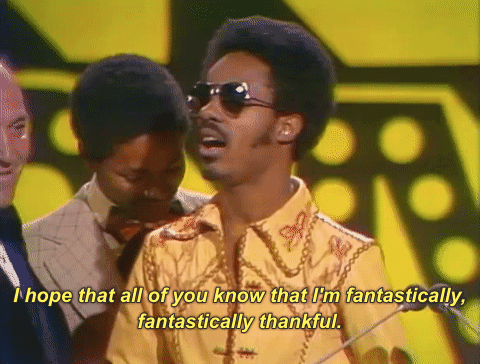In 1972, Stevie Wonder debuted the talk box on live TV and left people in stunned silence
The "robot voice" was unheard of 52 years ago.

Stevie Wonder plays the talkbox in 1972.
Stevie Wonder is a musical virtuoso who can play just about any instrument you put in front of him, whether it’s a piano, harmonica, drums, or the harpejji, a cross between the piano and drums. But he is also an innovator who, after achieving success as a teenager, became an adult artist keen on breaking out of the “soul” genre and making incredible albums that combined jazz and rock.
In 1972, at 21, he showed off a new instrument, the talkbox, that most people had never heard on “The David Frost Show." At first, the audience found it funny, but once he began to play it with the soul and virtuosity he’s known for, people saw the talkbox as a new way for musicians to express complex emotions.
Wonder’s performance with the instrument is believed to have been the first time it was played on national TV.
Its space-age sounds helped create the adorable squawks and squeaks of BB-8 in the “Star Wars” films.
In his legendary introduction of the instrument, Wonder plays the talkbox on “Close to You” by The Carpenters and then transitions into a soulful version of “Never Can Say Goodbye,” made famous by The Jackson 5.
- YouTubeyoutu.be
What’s so interesting about the performance is that Wonder uses humor to introduce the funny-sounding instrument to the audience. Juxtaposing the saccharine sounds of The Carpenters with an other-worldly-sounding instrument was a definite clash of styles in 1972. But once the audience gets comfortable with the instrument, Wonder takes it in another direction, using it to create soulful, sincere sounds that create a unique atmosphere most people had never heard before, especially on prime TV.
It takes an incredible amount of talent to take something that sounds so strange and to be able to move people emotionally with it.
Wonder’s performance struck Frank Ocean, who sampled it on his song “Close to You” on his critically acclaimed 2016 “Blonde” album. However, in this version, Ocean changes lyrics to talk about a tough break-up with an ex-partner.
In his live performances, Ocean has blended “Close to You” with “Never Can Say Goodbye,” just like Wonder did in 1972.
- YouTubewww.youtube.com
The talkbox became a big part of pop music in the '70s and ‘80s, most notably in 1980 with Zapp’s “More Bounce to the Ounce,” in which Roger Troutman played the talkbox, hooked up to a synthesizer with incredible agility. Troutman would use the talkbox throughout his career, having another major hit with the instrument in 1996 with Tupac and Dr. Dre’s “California Love.”
Sadly, Troutman was murdered by his brother outside of a recording studio in 1999.
- YouTubewww.youtube.com


